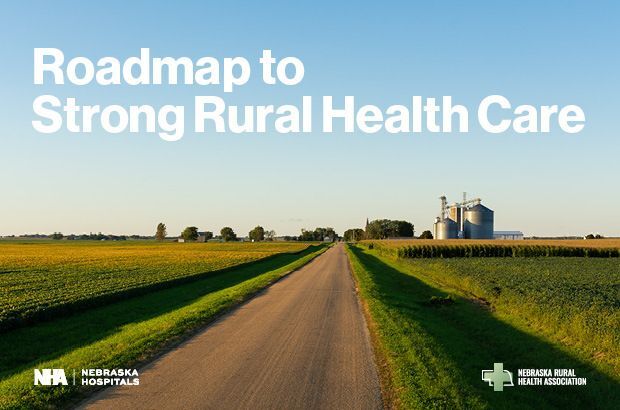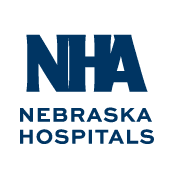Roadmap to Strong Rural Health Care

Rural Health Care is at Risk
Two years ago, the Nebraska Hospital Association partnered with the Nebraska Rural Health Association on the first of its kind Roadmap to Strong Rural Health Care in Nebraska. The Roadmap presented a combination of state and federal issues and the actions needed to strengthen and support rural health care in our state.
These past two years have seen significant progress towards addressing the challenges identified in our first roadmap. We are proud of the passage of LB 1087 (2024) to sustain hospitals by establishing appropriate Medicaid reimbursement, the passage of LB 256 (2024) to provide telehealth parity, and the expansion of several initiatives to address statewide workforce shortages. However, there is more work to be done to protect and sustain our rural hospitals and clinics, enabling them to deliver the care rural patients deserve.
Strong hospitals help create strong communities. Rural hospitals provide much needed access to affordable, quality health care for patients close to home, and operate as economic anchors in their local communities, supporting good paying jobs and infusing the local economy with spending on goods and services. Not only do hospitals directly employ thousands of Nebraskans, but the economic activity they generate supports other local businesses. In fact, for every dollar spent at a hospital, the local economy receives $1.50 back. In 2020, rural hospitals supported one in every 12 rural jobs nationwide, as well as $220 billion in economic activity.
Rural hospitals are particularly critical in Nebraska. Rural hospitals make up about 35 percent of all hospitals nationally, but over 68 percent of hospitals in Nebraska. Nebraska has more rural residents living at least 25 minutes away from an ambulance than all but two other states. Approximately 16 percent of Nebraska mothers must travel at least 30 minutes to find a maternal care provider, about twice the national rate.
Ongoing shortages in the health care workforce exist across rural Nebraska. Fourteen of the state’s 93 counties do not have a primary care physician. Eighty-five of Nebraska’s rural communities are considered medically underserved areas for primary care services alone. Projections show Nebraska will experience a workforce shortage of over 5,000 nurses in 2025. Rural hospitals and health systems face unique challenges and constraints that require unique solutions.

